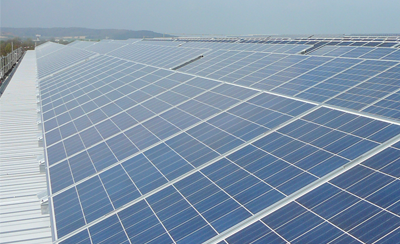New Innovations Mean More Efficient Solar Cells
Going green is not just seeing a brief vogue; it’s definitely here to stay. This is because more and more people are realizing that streamlining green technology like wind and solar power is not just a nifty niche industry. It’s becoming an environmental imperative. That being said, there have been a number of major obstacles to overcome before these technologies are practical. This is especially true when it comes to the size and storage capacity of solar cells and their size.
Current top of the line photovoltaic (solar) cells are only able to store several microseconds of electricity which means that for solar panels to be truly efficient you need thousands of solar cells in a rather large solar panel in order to get the energy you’d need. But it finally looks like we’ve turned a corner in solar technology development.
At UCLA, a team of creative scientists have developed a system to allow solar cells to store more energy for longer periods of time. In keeping with the focus of green technology on nature, scientists used the process of photosynthesis as a model for their research. Photosynthesis is the process by which plants transform sunlight into energy.
Plants take sunlight and using nanoscale structures to separate charged cells rapidly pulling apart electrons from the positive molecule that’s left behind to create energy. Currently, solar cells aren’t able to keep those positive and negative charges apart before they’re converted to energy.
Now UCLA scientists have created a process that’s able to keep those charges apart from each other for much longer than conventional photovoltaic cells. In fact, they can keep them apart for days and up to several weeks. The next step for them is to integrate this process into existing solar cells. This will very much increase their storage and energy generating capacity.
Even though this is big news, it’s not the only news! The U.S. Army Aviation and Missile Research Development and Engineering Center have actually developed a smaller and more efficient solar cell. Current solar panels rely on a silicon construction which means they are unable to fully utilize the maximum power of the sunlight shining on them. Now, the Army has inserted silver and gold between the semiconductors that take the sunlight and transform it into electricity. This small change in design allows them to make solar cells 1,000 times thinner, and more cost-effective while massively improving their efficiency.
These amazing steps forward will make solar energy a more competitive and practical solution in the push towards cleaner, more earth-friendly energy. Testing their efficiency will mean that light measurement technology will be more vital than ever in producing panels that remain consistent in quality and efficiency.











